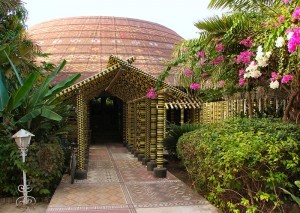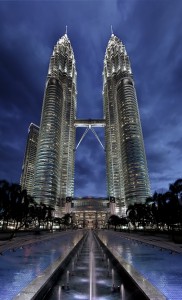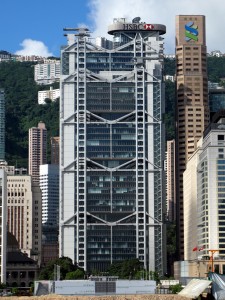The colonial presence is always ambivalent, split between its appearance as original and authoritative and its articulation as repetition and difference. It is a disjunction produced within the act of enunciation as a specifically colonial articulation of those two disproportionate sites of colonial discourse and power: the colonial scene as the invention of historicity, mastery, mimesis or as the ‘other scene’ of Entstellung, displacement, fantasy, psychic defence, and an ‘open’ textuality.
Homi Bhabha “Signs Taken for Wonders” 107-8
In Homi Bhabha’s “Signs Taken for Wonders,” the English book is presented as an unintended vehicle of hybridization and ambivalence. In its original context, it was a direct product of its culture, but in the colonial context its initial meaning started slipping away as it underwent “an Entstellung, a process of displacement, distortion, dislocation, repetition” (105). Through this process the book, used by the colonizer and colonized alike, eventually became an ambivalent object, as ambivalent and uncertain as colonial rule itself.
Colonial architecture shares many of the characteristics of this transfer, and like Bhabha’s English book, it can be regarded as “an insignia of colonial authority and a signifier of colonial desire and discipline” (102).
Colonialism and Architecture
Bhabha’s reasoning can be best applied to the early stages of the history of colonial architecture. For instance, the English in India and the French in Indochina and Northern Africa, tried to retain control of the semantic content of the styles in which they built. At the same time, however, the local elites were freely using elements of Western architectural vocabularies to create their own hybrid products. In so doing, they forced a semantic shift that subverted the Western canon in ways that upset European claims to exclusive semantic and representational rights.

As Thomas Metcalf and Gwendolyn Wright have shown, the history of architecture and urbanism in colonial settings develops into a narrative of adaptive strategies that were closely related to the changing policies of colonial rule. In both French and British colonies, there was a gradual move from building in styles imported directly from the metropole to the adoption of elements from the local architectures. In the words of Gwendolyn Wright:
Administrators hoped that preserving traditional status-hierarchies would buttress their own superimposed colonial order. Architects, in turn, acknowledging that resistance to new forms is often based on affections for familiar places, tried to evoke a sense of continuity with the local past in their designs. (9)
In the period between the two World Wars, this second phase of syncretic design would in turn be superseded by a policy of modernization that was translated architecturally as an extension of the so-called “International Style.” This trend in many cases was continued even after independence by the new ruling elites and their architects. Thus, if for Gwendolyn Wright, “political ambitions are not inherent in architectural forms, whether the forms are modern or historicist, whether the politics of the patrons are conservative or radical,” (309) we might add that by the same logic styles could be once more recycled, and their associations once more revised, as the postcolonial era was inaugurated.
The history of colonial architecture, however, also includes many instances of building design related to what Mark Crinson has termed “informal imperialism” whereby “control was established through the ostensibly peaceful means of free trade and economic integration into the orbit of European power” (2). These were site-specific cases that did not correspond to a general colonial ideology, as in the case of the building of St. Mark’s Church in Alexandria (1845-1855). In our neocolonialist times, examples of such seemingly isolated projects continue to be found, most notably in the designs of multinational architectural firms.
Orientalism and Architecture

In the nineteenth century, the architectural and urbanistic enterprise being undertaken in the colonies was also closely related to the general phenomenon of Orientalism that was then emerging in Europe. Scholarly architects, such as James Fergusson in India, assembled encyclopedic histories of architecture that included local architectures, such as his Illustrated Handbook of Architecture (1855), that would later prove crucial in the creation of pseudo-Indian styles by British architects active in India. Such hybrid styles can be understood through Bhabha’s interpretation of the colonial “strategy of disavowal” whereby “the trace of what is disavowed is not repressed but repeated as something different – a mutation, a hybrid.” It is a strategy, however, that “disturbs the visibility of the colonial presence and makes the recognition of its authority problematic” (111).
Architecture and Dominance
In recent years, the study of colonial architecture and urbanism has been much expanded to include cases that might be considered unorthodox, such as the imposition of the principles of socialist realism in architecture in the areas under the influence of the ex-Soviet Union. Greg Castillo describes this process as “colonial Socialism”and proposes the notion of a “Stalinist Empire” in which Moscow acted as colonial metropole and urban model.

A number of these cases, including Castillo’s text, are discussed in Forms of Dominance (1992), a collection of essays edited by Nezar AlSayyad. For AlSayyad, “dominance is not exclusive to colonial cities, but the use and manifestation of dominance in the colonial context is particularly blunt” (5). The editor himself contributes to the volume with a study of “The Islamic City as a Colonial Enterprise”(27-43) where he poses the question: “Why is it that in our use of the cultural association we talk about the urbanism that the Arabs initiated or inherited in the Middle East, North Africa, and Central Asia as Islamic urbanism and not colonial urbanism? (…) Why is it then that we persist in talking about Islamic cities instead of the colonial cities of Islam?”(27)
The essays in Forms of Dominance are very much indebted to the pioneering work of Anthony D. King. King himself contributed to the volume with an epilogue. In this closing essay, King discusses the persistence of colonizing practices in an arguably postcolonial world.
The Postcolonial Phase

In postcolonial times, architecture and urbanism have continued to play an important role in the enforcement of political control, often under the guise of national styles. Lawrence Vale explores the complexities of post-independence architectural production in his 1992 book Architecture, Power, and National Identity. Vale probes the question of the manufacture of a national style in the newly created post-independence nation-states and wonders whether it is possible to design ex novo forms symbolic of national identity.
In other cases, architecture has served emergent economies to express their fascination for symbols of economic development and national progress in a context of inflationary globalization, international economic competition, and more or less covert instances of neocolonialism (see Transnationalism and Globalism ). In the first half of the 1990s, several countries in Asia invested much effort and ingenuity in the construction of skyscrapers which not only challenged the legendary supremacy of the American high-rise, but were also meant to represent these countries’ new role on the international stage (see, for example, Petronas Towers and Shanghai World Financial Center).
On the other hand, the challenge of designing an architecture of place, beyond the “universalism” of the modernist movement and of corporate hubris, is being encouraged by certain constituencies such as the Aga Khan Award, whose patronage is nonetheless often received with a considerable degree of controversy.

International architectural firms, mostly based in the United States and Western Europe, have found an expanding and profitable market in the former colonies. Their transnational practices place their designs within the more general framework of globalization and postmodernist architecture, but in some cases these categories overlap with the reality of late colonialism in ways that throw a strong light on the continued dominance of the Western canon. In the case of Sir Norman Foster’s Hong Kong and Shanghai Bank headquarters (Hong Kong, 1979-85), a high-tech office building integrated Chinese geomancy principles, but it was also a monument to corporate and technological power erected in one of the last colonies of the former British Empire. As such, it qualifies as late colonial architecture, although it is seldom so interpreted in the specialized literature.
AlSayyad provides one last question for consideration. In his essay on the Islamic city he states: “Colonial urbanism can only be understood in its true temporal framework. Once this framework ceases to exist, then its urban products can no longer be seen as colonial” (41). What then, we may ask, does colonial architecture turn into after independence?
Bibliography and Recommended Reading
- AlSayyad, Nezar, ed. Forms of Dominance. On the Architecture and Urbanism of the Colonial Enterprise. Aldershot: Avebury, 1992.
- Bartolucci, Marisa. “Islamic Revelations.” Metropolis 2, vol. 17 (September 1997): 62-67.
- Bhabha, Homi K. “Signs Taken for Wonders: Questions of Ambivalence and Authority under a Tree Outside Delhi, May 1817.” The Location of Culture. London: Routledge, 1994: 102-22.
- Castillo, Greg. “Cities of the Stalinist Empire.” Forms of Dominance. ed. Nezar AlSayyad. Aldershot: Avebury, 1992:261-85
- Çelik, Zeynep. The Remaking of Istanbul. Portrait of an Ottoman City in the Nineteenth Century. Berkeley: University of California Press, 1993 (1986).
- Crinson, Mark. Empire Building: Orientalism and Victorian Architecture. New York: Routledge, 1996.
- Culot, Maurice and Jean-Marie Thiveaud, eds. Architectures françaises Outre-mer. Belgium: Mardaga, 1992.
- Curtis, William J.R. Modern Architecture Since 1900. London: Phaidon, 1997.
- Germain, Michel. Le Viêt-nam autrefois. France: Horvath, 1994.
- King, Anthony D. Colonial Urban Development. Culture, Social Powerand Environment. London: Routledge & Kegan Paul,1976.
- Global Cities. Post-Imperialism and the Internationalization of London. New York: Routledge, 1990.
- Urbanism, Colonialism, and the World-Economy: Cultural and Spatial Foundations of the World Urban System. New York:Routledge: 1990.
- “Rethinking Colonialism.” Forms of Dominance. ed. Nezar AlSayyad, 339-55. Aldershot: Avebury, 1992.
- Metcalf, Thomas R. An Imperial Vision: Indian Architecture and Britain’s Raj. Berkeley: University of California Press, 1989.
- Nalbantoglu, Gülsüm Baydar, and Wong Chong Thai, eds. Postcolonial Space(s). New York: Princeton Architectural Press, 1997.
- Vale, Lawrence J. Architecture, Power, and National Identity. New Haven: Yale University Press, 1992.
- Wiseman, Carter. “Flights and Fancy.” ARTnews 6,vol. 96 (June 1997): 116-21.
- Wright, Gwendolyn. The Politics of Design in French Colonial Urbanism. Chicago: University of Chicago Press, 1991.
Related Links:
ArchINFORM, architecture page (entries by country/city/architect)
“The High-Rise Pages”
http://www.xs4all.nl/~hnetten/
Phillips Antiques, interesting commercial page
http://www.phillipsantiques.com/
Shanghai World Financial Center, information page
http://www.xs4all.nl/~hnetten/swfcfram.html
Author: Martina Millà Bernad, Spring 1998
Last edited: October 2017
2 Comments
Thanks for this great article, it’s real pleasure to read it
Sorry for my bad english… (It’s more easy to read, than write…)
In Guadeloupe, we know well the colonial architecture, with the city of Pointe-A-Pitre in rank the Earth you have a complete panel of the architecture of the French colonialist time